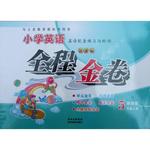
 名校名师培优作业本加核心试卷系列答案
名校名师培优作业本加核心试卷系列答案 全程金卷系列答案
全程金卷系列答案科目:高中英语 来源:不详 题型:完形填空
查看答案和解析>>
科目:高中英语 来源:不详 题型:完形填空
查看答案和解析>>
科目:高中英语 来源:不详 题型:阅读理解
查看答案和解析>>
科目:高中英语 来源:不详 题型:阅读理解
 tiful. .com
tiful. .com ially if you are losing wei
ially if you are losing wei ght and losing inches.
ght and losing inches.| A.how people should keep fit | B.a healthy diet program |
| C.why people should keep fit | D.ways to lose weight |
| A.become shorter | B.become taller |
| C.become fatter | D.become thinner |
| A.this program makes a change in your lifestyle |
| B.this program can stop you from feeling hungry all the time |
| C.this program allows you 1,700 to 2,000 calories for each meal |
| D.this program tries to tell us what people should do to become slim |
| A.some other programs | B.the content of this program |
| C.some interesting foods | D.some products you can buy |
查看答案和解析>>
科目:高中英语 来源:不详 题型:阅读理解
| A.by mercilessly exploiting women workers in the clothing industry |
| B.because they are capable of predicting new fashions |
| C.by constantly changing the fashions in women’s clothing |
| D.because they attach great importance to quality in women’s clothing |
| A.a waste of money |
| B.a waste of time |
| C.an expression of taste |
| D.an expression of creativity |
| A.cost | B.appearance |
| C.comfort | D.suitability |
| A.New fashions in clothing are created for the commercial exploitation of women. |
| B.The constant changes in women’s clothing reflect their strength of character. |
| C.The fashion industry makes an important contribution to society. |
| D.Fashion designs should not be encouraged since they are only welcomed by women. |
查看答案和解析>>
科目:高中英语 来源:不详 题型:完形填空
查看答案和解析>>
科目:高中英语 来源:不详 题型:阅读理解
 wnership of a daughter from father to husband. Such rings were usually of solid gold to prove the groom’s worth.
wnership of a daughter from father to husband. Such rings were usually of solid gold to prove the groom’s worth. he 15th century B. over 1,000 years ago
he 15th century B. over 1,000 years ago 查看答案和解析>>
科目:高中英语 来源:不详 题型:阅读理解
 l-Mart is set to announce a major initiative aimed at helping cotton farmers go organic: it will buy transitional cotton at higher prices, thus helping to expand the supply of a key sustainable material.“Mainstream is about to occur,” says Hahn.
l-Mart is set to announce a major initiative aimed at helping cotton farmers go organic: it will buy transitional cotton at higher prices, thus helping to expand the supply of a key sustainable material.“Mainstream is about to occur,” says Hahn.查看答案和解析>>
湖北省互联网违法和不良信息举报平台 | 网上有害信息举报专区 | 电信诈骗举报专区 | 涉历史虚无主义有害信息举报专区 | 涉企侵权举报专区
违法和不良信息举报电话:027-86699610 举报邮箱:58377363@163.com